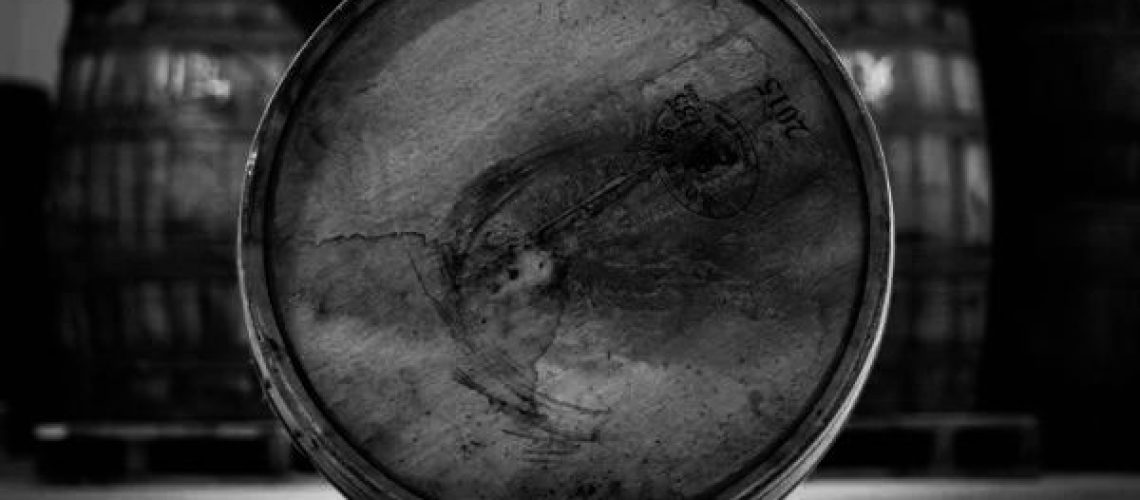Technically, whisky stills can be made of any number of metals or alloys, including iron, brass, aluminium, stainless steel or copper and even glass or ceramic. Distilling, when it began originally, used a lot of materials – pretty much anything that was available and could be made to work. Lately, most distillers have experimented with either copper or stainless as still materials. After a number of trials and errors, everyone seems to have settled on copper for distilling premium whiskies such as single malt scotch and good bourbon.
The question is why?
Alcoholic distillation is a 4,000-year-old process that started back in Mesopotamia, based on evidence from cuneiform tablets found in later-day Assyria. Indian and Chinese texts from two to three thousand years ago reveal that they too were distilling to produce alcohol. Arabs, Greeks, Romans … the list goes on.
Distillation of alcohol is essentially a simple process. Distilled spirits are produced by the fermentation of grains and other elements. Fermentation refers to the decomposition of organic materials which contain carbohydrates, it produces ethanol (C2H5OH) along with by-products such as carbon dioxide.
Ethanol boils at a lower temperature than water, so heating the mixture in a pot creates evaporated particulates – free of impurities – that can be condensed against a cool surface and collected in a different container. Interestingly, people began to distil alcohol either during or shortly after what historians deem to be the Copper Age in human history (roughly 3500-2300 BC). This may well have been the reason why copper was one of the early mediums used to design and build stills for alcohol – it was the new, cool material to play with.
Over time, other materials were used to build stills for distilling alcohol, including iron, brass, aluminium, copper, glass and ceramics. Stainless steel was a relatively recent addition after its discovery in 1913. The alloy caught on in popularity due to its useful properties, including it being an excellent conductor of heat – a fundamental necessity for still material.
Despite all these experiments, copper has historically been – and still remains – the preferred material that whisky stills are being made of. Let’s see why.
What does the copper actually do?
Copper has always been a favourite of still makers, whether home-made or industrial, for its malleability, conductivity and lasting sheen. You can beat copper into practically any shape you desire to. It resists corrosion, which means that its finish and shine do not get affected when it’s new or after use – the end result is a gleaming edifice built exactly to your specification. This is an important quality for whisky stills. Most scotch whisky makers prefer to distil their alcohol in an exact way that they believe captures all of the important flavours from the grains and the soil that the grains are grown in, plus the flavours and taste developing whatever secondary process they employ (e.g. malting).
Often during the distillation process, the angle and shape of the primary equipment are considered to be important factors in terms of how the distillate (that is, the alcohol itself) tastes. The malleability of copper makes it an excellent medium for creating vessels with precise shapes and sizes. The distinct onion head of the still is an example of how you can work with copper. The largest example of how copper can be moulded into large but precise shapes may be the Jameson Still Cork. It’s the largest pot still in the world, located at the Midleton Distillery in County Cork, Ireland. The still, built-in 1825, is no longer in operation but used to have a capacity of 37,971.65 US gallons. It serves as a testament to what copper can build.
An addendum to the above is the fact that the anti-corrosive nature of copper makes it an ideal material for stills being operated in harsh and uncertain weather conditions.
The second quality that is relevant is that copper spreads heat evenly throughout its surface. This is an important quality given that the entire content of the still needs to be heated to a certain temperature evenly – in other words, you cannot afford to overheat at a certain point of the vessel in order to ensure that the entire content of the vessel is heated to the required temperature. If you underheat, you will have left base mixtures that have not separated, creating inefficiencies. If you overheat to make sure that all of the base mixture is sufficiently heated, you might end up creating unsavoury flavours due to the whole concoction effectively getting burned.
The third quality is that distillation using copper vessels does not add any harmful chemicals to the alcohol that is finally produced. As a matter of fact, copper removes some harmful compounds (see below). This is different from iron and other materials that could be used.
Copper vs. Stainless Steel
Stainless steel is a decent conductor of heat, but copper is better. Stainless steel is substantially cheaper. Like copper, stainless steel is “sterile”, in that it does not react to the components of alcohol, water or oxygen – which means that it does not add any harmful or taste-producing chemicals if alcohol is being distilled in stills made out of it. It is also more durable than almost any competing material, including but not limited to copper.
The propensity of copper stills to degrade caused headaches to distillers – copper stills are expensive to build and replace. The cheapness and durability of stainless steel thus came to the forefront for the mass production of alcohol. That experiment, however, produced an interesting result.
The taste factor
Pioneers in the use of stills made from stainless steel noticed a thoroughly unwelcome outcome – the alcohol distilled from their new process emitted a noxious, Sulphur tinged odour. When they experimented with the speed at which the stills were run, or with alcohol produced at various “cut points” – that is, the point in the distillation at which the specific batch of alcohol was produced – they found that the odour still remained, permeating the end product. Clearly, it had to be something fundamental as opposed to a transformational phase of the distillation process which one could get rid of by running the process for a longer or shorter period of time, or by processing faster or slower.
On further research, a major hidden benefit of using copper as a still came forth. It turned out that the copper coating inside the still removes highly volatile sulphur compounds that may form during the distillation process, including dimethyl trisulphide or DMTS and ethyl carbonate – which is toxic. In addition, copper helps in the formation of esters, lending a fruity character to the final product.
Distillers who were leaning towards stainless steel as the “new” thing, thus rediscovered copper as the material that not only preserved the original taste and flavour of the alcohol, it prevented sulphurous odours and tastes from forming in the final product.
Along the way, it was also discovered that copper absorbs yeast cells that are produced during the fermentation process.
Everything involving copper flows from this premise.
Other benefits/effects of using copper in whisky stills
In addition to preventing sulphurous build-up by removing impurities, copper itself produces certain effects by reacting with the spirit being distilled. These end up either imparting unique tastes to malt whisky or removing them. Either way, they end up being important.
Worm Tubs vs. Shell-and-Tube – results in distinctly different tastes and finishes
Copper aids in rectification processes that many alcohol distillers rely on to produce clean whisky without odious flavours. In the case of single malt scotch, there are two types of apparatus involving copper that are used to condense the distilled spirit vapour – shell-and-tube or worm tubs. This is a vital step in producing malt whisky.
Worm tubs involve copper coils submerged in cooling water tubs. However, the copper does not have prolonged exposure to the condensing spirit – so the end product ends up being more sulphury with meaty or vegetal notes. Over time, slag will build in the inside of the “worm”, further reducing the efficacy of the copper being used.
The shell-and-tube construction involves copper even more directly since the copper comes in continuous, direct contact with the condensing spirit. This ends up producing a lighter flavour with fruity, grassy overtones when the whisky eventually matures.
The above property of copper lends itself to a distillation decision. If you wish to have a fruitier and grassier flavour, you should use a shell-and-tube copper apparatus. If, on the other hand, you prefer slightly more sulphury, meaty or vegetal flavours, use a worm tub.
Microbial effects
Copper has also been known to remove some of the microbes that form during fermentation.
The effect of copper seeping into the spirit
As the whisky distils, the copper in the stills gets imbued into the spirit in the form of copper salt or copper carbonate. Most of us have seen the effect without being aware of the precise cause. Where, you ask? It’s the bluish glow that you often find in a whisky cabinet. It imparts its own indelible flavour but luckily for us, most of it is discharged long before it makes its way into a bottle procured in the market.
Parts of a copper still will erode over time
Copper stills need to be repaired or replaced from time to time. The parts of the still where a lot of the “beneficial” reactions (read “reactions where copper interacts with the distillate”) take place often experience a thinning of the inner copper surface. In technical jargon, the still is known to “pant”, a la an over-exerted dog. Whatever the imagery, the result is a costly repair bill.
Bottom Line
In spite of a few drawbacks, the principal among which is the longevity and cost of a copper still, it is still considered to be the best possible medium for high-end malt whisky. In a concession to economics, certain distillers have started to use stainless steel equipment with copper lining on the inside. But if you review high-end single malt scotch distilleries or even decent US bourbon manufacturers, you will find them using copper stills more often than not. The taste and flavour consequences of shifting from copper are too great to ignore – which is why it remains the metal which is consistently used to build stills across centuries.


